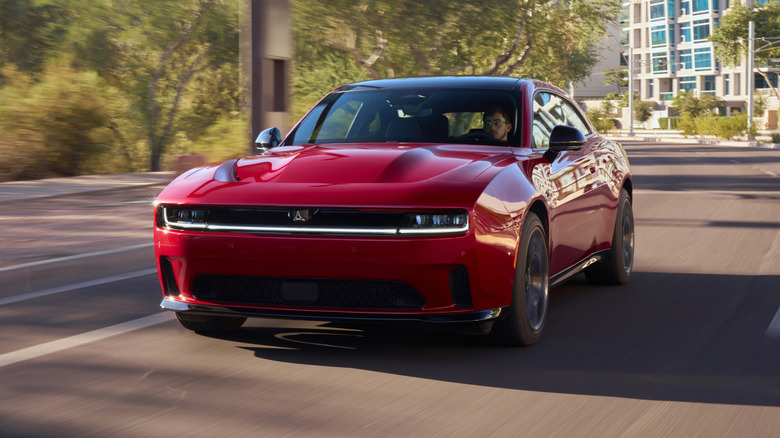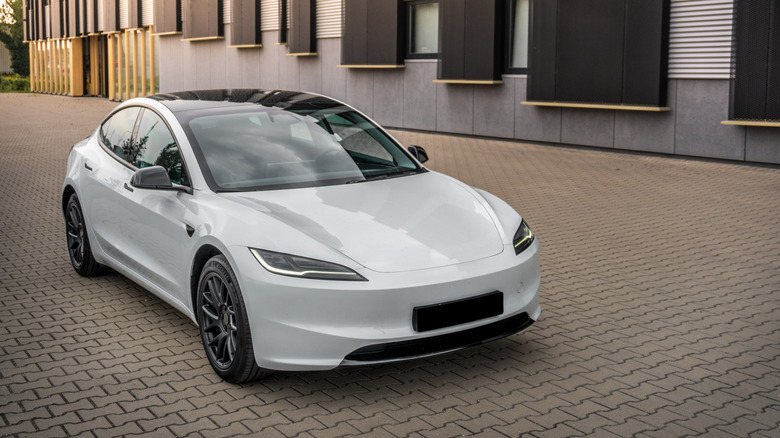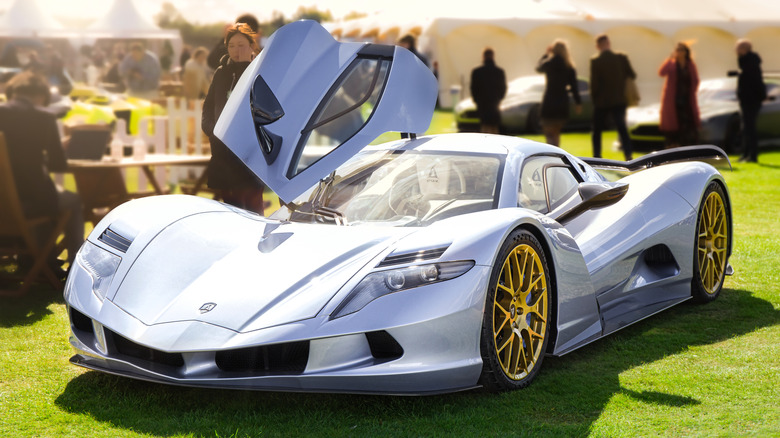Why EVs Are Devilishly Quick Off The Line But Still Have Low Top Speeds
Living with an electric vehicle comes with a wide range of benefits. EVs are more efficient, they are easier to maintain, they operate without tailpipe emissions, and offer a smoother, vibration-free driving experience. EVs are also quicker from a standstill and make regular commuting more responsive and agile. Be that as it may, EVs aren't better than internal combustion engine cars in every category, and that's especially evident when it comes to top speed.
An electric motor can generate maximum torque immediately, but the lack of top-end punch is due to gearing and how different transmissions work in electric cars. EVs tend to have a single forward gear, which is more than enough for a rapid acceleration to the speed limit, but beyond that point, the acceleration tapers off. This means that when you press the accelerator, the motor gives you 100% of power, which is what gives EVs the upper edge from a standstill.
On the other hand, ICE cars have multi-gear transmissions that act as torque multipliers, allowing them to maintain strong acceleration and higher top speeds. In most EVs, the motor delivers torque directly based on how fast it spins, with no traditional gears to adjust that output. In contrast, an ICE car uses a multi-gear transmission that allows the engine to operate at optimal RPMs while the wheels spin faster, which helps achieve higher top speeds.
What limits the top speed in EVs?
The new Dodge Charger Daytona Scat Pack EV makes 670 horsepower, but its top speed is limited to just 136 mph, slower than many ICE cars with half the power. In addition to the aforementioned lack of a transmission, the main reasons why EVs can't reach the same speeds as ICE cars are also due to weight, complexity, the battery, and different priorities.
Electric cars are, on average, 20-50% heavier compared to ICE cars, and weight has always been one of the greatest enemies of speed. Another reason why EV manufacturers often sacrifice top speed is that achieving higher speeds requires adding complexity and weight to the vehicle, like adding a multi-gear transmission, a beefier cooling system, and reinforced drivetrain components.
The battery can also be a limiting factor, as higher speeds and more wind resistance require it to discharge energy at a much faster and more intense rate. This builds up heat within the battery, and if not properly managed, can lead to battery degradation and reduced performance. That's why EV manufacturers electronically limit the top speed of their vehicles. At the end of the day, most EVs prioritize efficiency and driving range over performance, and these two categories are inherently at odds with each other.
The fastest electric cars today
If a manufacturer wants to make an EV go quickly, it can do so by sacrificing some of the aforementioned benefits, such as range and efficiency. The Rimac Nevera is one of the fastest electric cars on the market, with a claimed top speed of 258mph, but it does so with a massive 117-kWh battery, and only 204 miles of EPA-estimated range. For context, the Lucid Air Pure RWD tops out at 124 mph, and it comes with an 88-kWh battery, but an EPA-estimated range of 419 miles.
According to Aspark, on October 31, 2024, the Aspark Owl EV hypercar reached a top speed of 273mph, earning it the "fastest speed achieved by a battery-powered electric prototype hyper car" record, as certified by Guinness World Records. When top speed becomes the norm, efficiency takes a back seat, which is why the fastest EVs are never the ones that go the farthest, and why pushing batteries to their limits undermines the core benefits EVs are known for.


